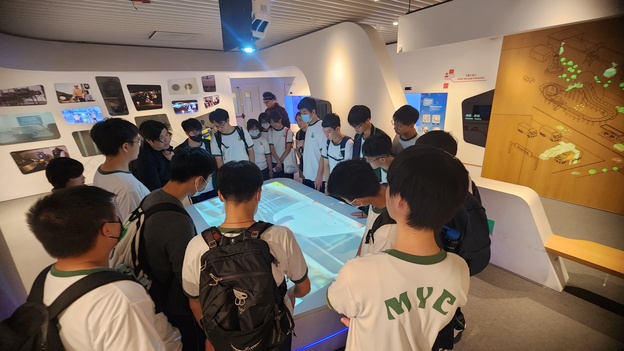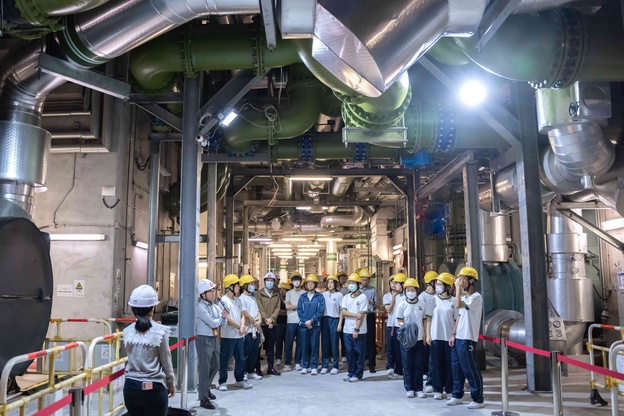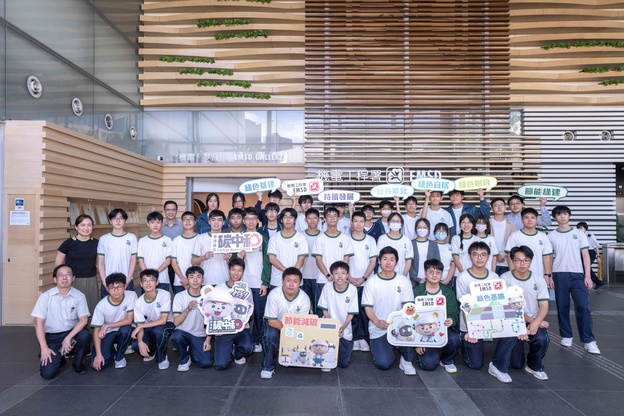Master Talk: Electrical and Mechanical Services Department
Electrical and Mechanical (E&M) works are a pivotal component of the construction industry. Before buildings can be inhabited and utilized, they must be outfitted with electrically driven and mechanically operated equipment. At the recent CIC Master Talk, Form 5 students from United Christian College (Kowloon East) Church of Christ in China Ming Yin College had the opportunity to visit the EMSD Headquarters – the linchpin of the city’s E&M sector. During their visit, the students discovered the diverse applications of E&M facilities and the overarching role of the EMSD. They toured the headquarters, a building acclaimed with a Platinum Rating by the Hong Kong Green Building Council, to understand its achievements in energy efficiency and emission reduction. Additionally, the students explored the Kai Tak District Cooling System (North Plant) to grasp how this large cooling system supplies chilled water to efficiently offer air-conditioning across the 2.54 square kilometers of the Kai Tak Development.
Understanding the role of the EMS Department & its Trivia
The tour commenced at the EMSD Gallery, which featured short videos, interactive digital games, models, and quick quizzes to elucidate the EMSD’s role as the protector of E&M safety in Hong Kong. The Gallery also highlighted E&M concepts that are integral to students' daily lives, such as the types of gases used in Hong Kong and the significance of energy labels on electrical appliances.
Gaining Insight into Advanced Energy-Saving Technology on different floors within the Headquarters
Post-gallery, the students visited multiple areas within the Headquarters, including the outdoor plaza, 7th-floor offices, and the observation rooftop. These spaces showcased how eco-friendly designs have been seamlessly integrated into the building, once the Kai Tak Airport Cargo Terminal.
Innovations such as photovoltaic trees and solar-powered streetlights were introduced to reduce dependency on non-renewable energy sources. The installation of vertical green walls and a hydroponic garden injects a burst of nature into the urban space, while metal shading devices and double-glazed windows help regulate indoor temperatures and decrease the load on air conditioning systems. On the 7th floor, students encountered sun pipes and displacement ventilation systems – alternatives to traditional lighting and air conditioning methods. Sun pipes harness natural light through a dome-shaped collector, channeling it via reflective tubing to illuminate indoor spaces without electricity.
In contrast to conventional air conditioning, which is installed at elevated positions with high-level air vents, the building’s system minimizes heat transfer from walls and the roof, supplying cooler and fresher air to workspaces and lessening the electricity required for cooling. On the observation deck, the students observed the 2,000 photovoltaic panels, which save approximately 3% to 5% on electricity and about HK$300,000 in costs annually.

Tour of the Cooling System to better learn its operations & new Air-Conditioning Technology powering Kai Tak Development
The tour extended to the Kai Tak District Cooling System (North Plant), where students delved into its operations and the novel air-conditioning technology empowering the Kai Tak Development (KTD). Dressed with safety hard hats, they examined the cooling systems, chilled water pumps, and the workers in action. Encompassing 320 hectares, the KTD hosts a variety of facilities with substantial air-conditioning demands such as schools, MTR stations, government buildings, a cruise terminal, hospitals and more`. The District Cooling System utilizes seawater to generate chilled water at the central plant, distributing it through pipes for air conditioning, achieving a total cooling capacity of 284MW – the equivalent needed for 40 30-storey commercial buildings. This system boasts a 35% increase in energy efficiency compared to conventional air-conditioning systems and plays a crucial role in reducing carbon emissions and mitigating the urban heat island effect.


